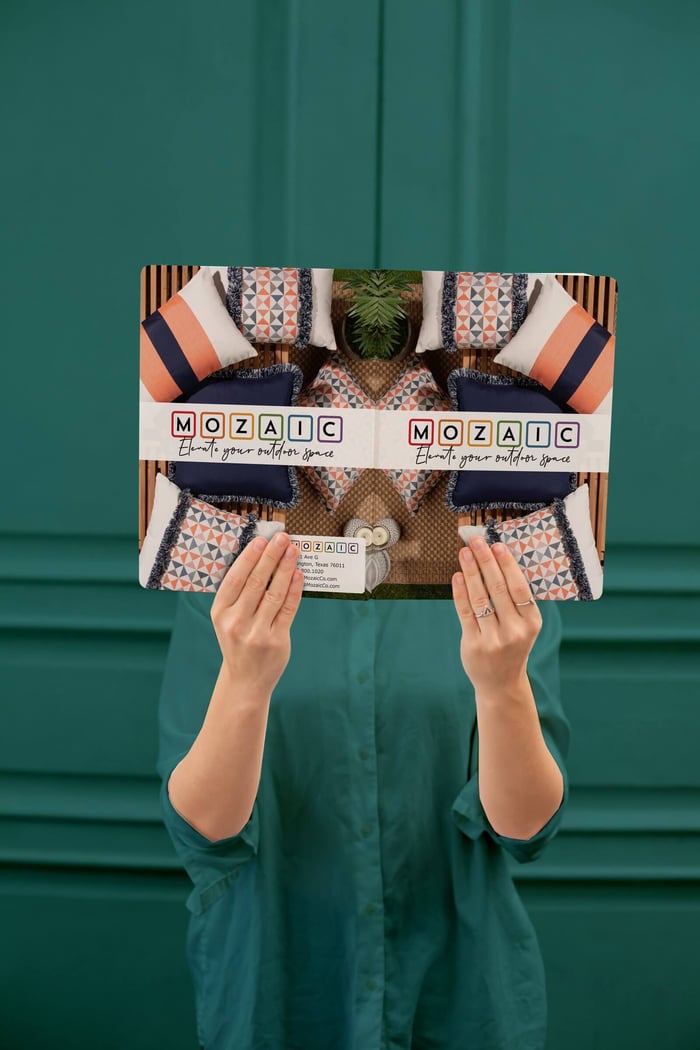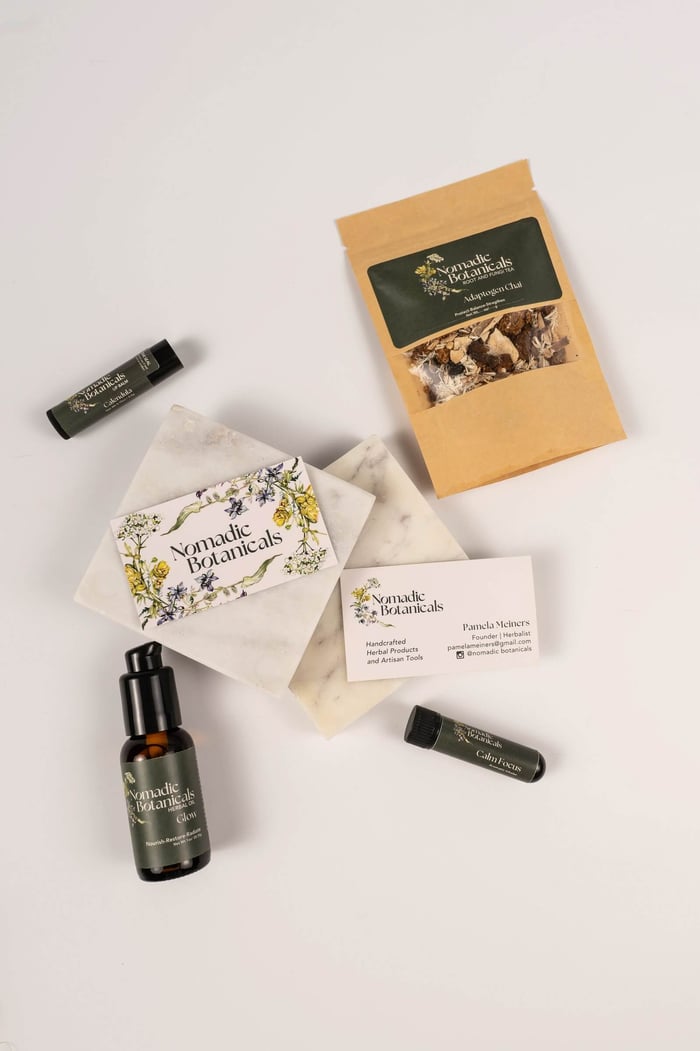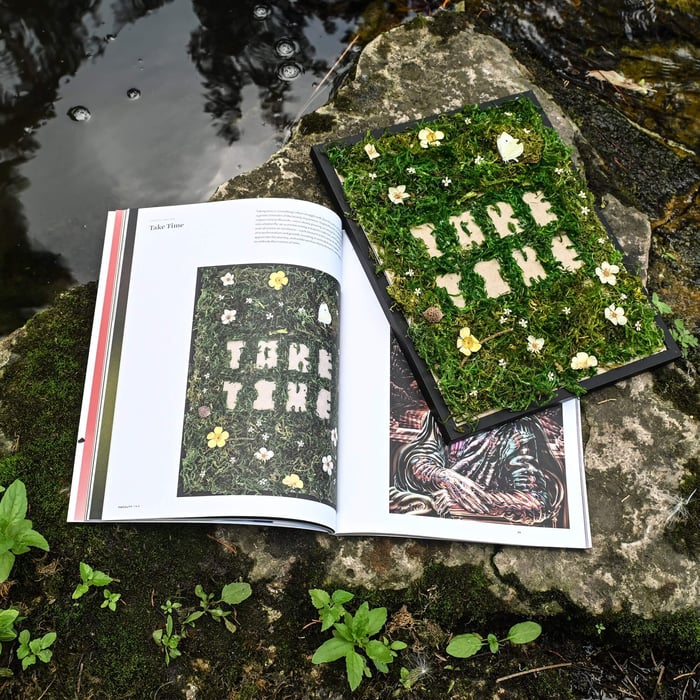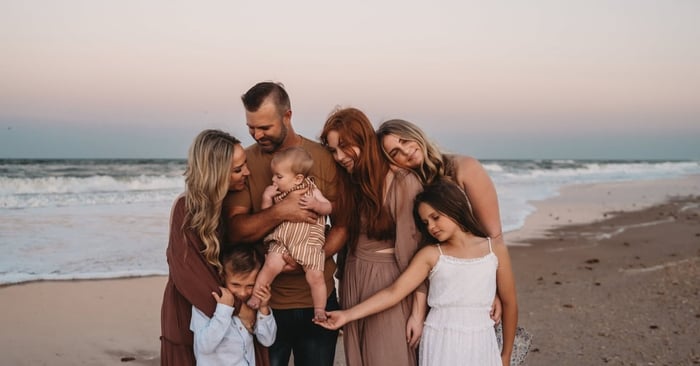Cheryl Bever is the owner and creative catalyst of Tandem Creative Works, an independent design studio specializing in visual branding, marketing materials, and product photography for small businesses and makers. With over 20 years of design experience as an in-house graphic designer for a home furnishing manufacturer, she understands what makes visual branding effective from both the creative and business sides.
Based in Chicago for over 25 years, Cheryl also serves as Vice President of the Chicago Graphic Design Club, where she organizes programming and builds communities for local designers. When she's not working with clients, you'll find her pressing wildflowers collected from Chicago's natural areas or cheering loudly at her son's games—"I takes my role as his #1 fan very seriously".
Cheryl Bever sat down to speak with Brandon Kosters about her experiences as a professional creative and business owner.
Your creative practice incorporates graphic design, photography, print, marketing.... Where, when, and how did your journey as a professional creative begin?
My professional creative journey began in the fashion design department at Columbia College Chicago. I've always been creative, but I was certain fashion design was my calling. My CAD (Computer Aided Design) professor connected me with a furniture manufacturer in the city that needed someone to run their new digital pattern making software. I took to it quickly and that position soon transitioned to me managing their product design department.
The pull of fashion work was still strong, so I left to pursue opportunities in that industry, but when that didn't pan out, fate intervened. I met a former coworker for lunch, and ran into the owner, who asked if I'd return—this time to manage their e-commerce site. He valued my work ethic and problem-solving instincts, and knew I'd figure it out. And I did. I taught myself photography to properly showcase products, learned to build homepage images, and got so proficient the owner sent me to formal training of the Adobe Creative Suite. I became their in-house graphic designer, a role I held for 15 years.
During that time, I'd always dreamed of running my own studio, but it felt too risky. When the pandemic shifted us to remote work, I discovered I thrived in that environment. When we were called back to the office, I hesitated—and my husband saw what I couldn't yet see clearly: I was ready. His belief in me gave me the courage to finally launch my own creative practice.
I'd love to learn more about your involvement with interior designers and home furnishing manufacturers—how did you begin working in that niche?
My 15+ years working for a home furnishing manufacturer gave me deep knowledge of that industry: fabrics, product positioning, and especially how to market to consumers, retailers and interior designers. While I occasionally work with manufacturer's reps in that space, my current practice has evolved to serve small businesses and independent makers across diverse industries. I love the variety—one week I'm photographing pet products, the next I'm designing for a cross-stitch entrepreneur or an herbal apothecary. That furniture industry foundation taught me how to understand products, tell their stories visually, and connect with the right audiences—skills that translate beautifully across any industry.
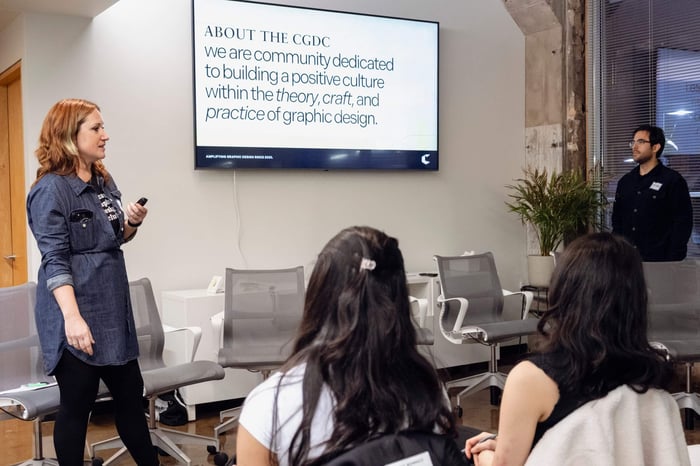 Cheryl Bever presenting at the Chicago Graphic Design Club - photo by Jeffrey Hitchens
Cheryl Bever presenting at the Chicago Graphic Design Club - photo by Jeffrey HitchensI'm fond of the way you approach designing/printing business cards. Everything is textured and colorful—not off-white with a nondescript font. What informs your material selection process?
Material selection starts with deep listening. Through our initial conversations and brand questionnaires, I'm paying attention to not just what clients say, but how they describe their vision—the energy and personality they want their business to project.
I ask questions like: If your business were a physical space, what would it feel like to walk into? What would your brand wear to a networking event? These help clients articulate feelings they might not have words for yet.
From there, I translate those insights into tangible choices. A ceramicist who describes their space as "a sunny studio with tactile warmth" might get cotton paper with a deckled edge. A bold, modern brand that wants to feel "sleek and confident" calls for something entirely different—maybe a thick, matte black stock with spot gloss.
Yes, some projects call for that crisp white-on-white minimalism. But most of my clients are makers and small business owners who've poured their hearts into what they do. Their business cards should feel as distinctive and intentional as they are.
Designers, like professionals within any other industry, are wise to keep an eye on trends and what competitors are doing. What does this mean to you in the context of your own practice? Are there any current design trends that you have strong feelings about, whether you like or dislike them?
I absolutely keep an eye on trends—my Instagram feed is full of "top design trends" posts—but I'm selective about when and how I apply them. When it comes to a company's visual identity, whether it's packaging, email design, or photography, I firmly believe timeless beats trendy. Being timeless doesn't mean you can't be edgy or push boundaries. But what sets a business apart isn't looking like everyone else.
Right now, I'm seeing AI-generated imagery everywhere, and it feels inauthentic—people can tell. The same bubbly fonts showing up on every small business brand. Overused boho and retro aesthetics that have lost their distinctiveness.
I recently had a client who wanted to jump on the Wicked green-and-pink trend for an email and social post. But it didn't make sense: they had no green or pink in their brand palette or product selection, and by the time they wanted to use it, the trend was already oversaturated. I was able to persuade them that if they want to be a “trend-setter” they needed to define the trend, not chase ones already out there.
Trends can inform your work, but they shouldn't dictate it. My job is to create visual identities that will still feel right in five years, not designs that scream "this was made in 2025."
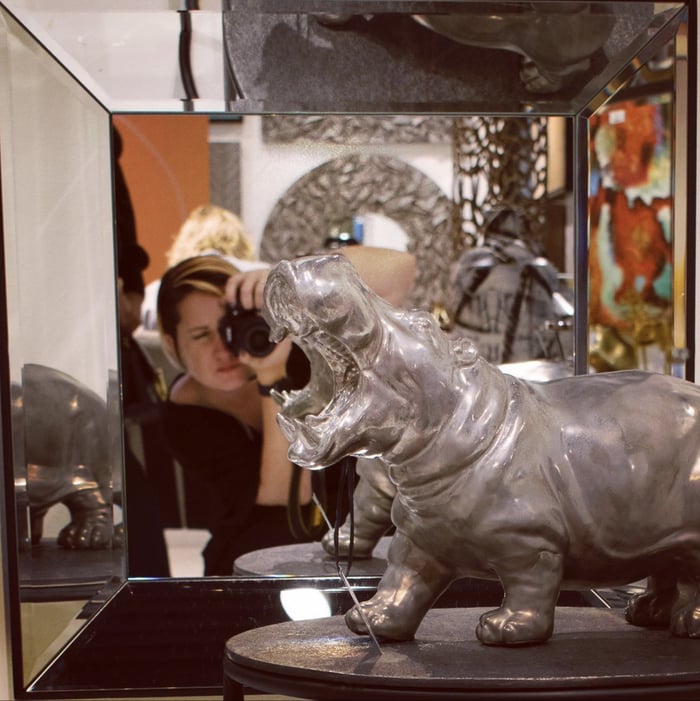 Cheryl Bever in action at High Point MarketWhat projects are you currently involved with?
Cheryl Bever in action at High Point MarketWhat projects are you currently involved with?
Right now, my biggest project is one that's both exciting and terrifying—I'm rebranding my entire business from CMB Image & Design to Tandem Creative Works. It's a complete evolution of my visual identity and how I present myself to the world. After years of working in tandem with my clients, the name finally reflects what I've always done: partnering with people to bring their visions to life.
Beyond my own work, I'm designing the 2026 calendar for the Arkansas Rice Federation—a project I look forward to every year. They run a farm dog contest, and the top 12 dogs get featured in the calendar. It's always a joy to see which pups make the cut and to create something that celebrates both the rice industry and the farm dogs that are part of that world.
I'm also working on retail packaging for Carolina Pet Company—licensed Body Glove and Pendleton gear. It's exciting to be trusted with interpreting major brand guidelines and adapting them for our products. These are huge names in the retail market, so the responsibility to get it right is real.
For the New Century Art Guild, a veteran art nonprofit where my husband Michael leads the Chicago chapter, I'm designing a t-shirt graphic for their fall veteran art show.
And beyond client work, I'm organizing events and programming for the Chicago Graphic Design Club as Vice President, which keeps me connected to the design community and creating opportunities for other creatives.
Where would you like to see yourself in 5 years time? Creatively, professionally... in whatever terms!
Honestly, I'm not a five-year-plan person, I tend to take things as they come. But if I'm looking ahead, I'd love to see my business grow in a sustainable way. I recently lost a major client, so finding a few more long-term partnerships with entrepreneurs who are taking their side hustles to the main stage would be ideal. (And yes, I'd love to work with more interior designers who appreciate good design.)
What success looks like to me is simple: financial stability doing work I love, with more time to dedicate to my own art, like my botanical pressing, and to my role with the Chicago Graphic Design Club.
I'm drawn to working with small makers and artists, though I'll admit there's always a tension there. The people I most want to help often can't afford what the work is worth. But that's part of why I want to keep building: so I can be more selective and still support the creative community in meaningful ways.
Beyond client work, I'd love to do more workshops and panels—not just with CGDC, but anywhere I can share the message that there's no single "right" path in creative careers. My journey from fashion student to furniture CAD operator to e-commerce manager to graphic designer to business owner proves that. If I can help other creatives feel less pressure to follow a prescribed route and more confidence to trust their own weird, winding path, that would feel like real success.
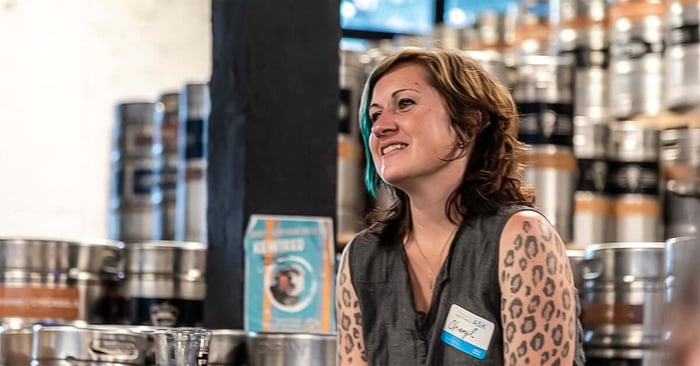 Cheryl Bever by Patrick Smith
Cheryl Bever by Patrick SmithFor more from Cheryl, find Tandem Creative Works on Instagram, Facebook, or their website.

